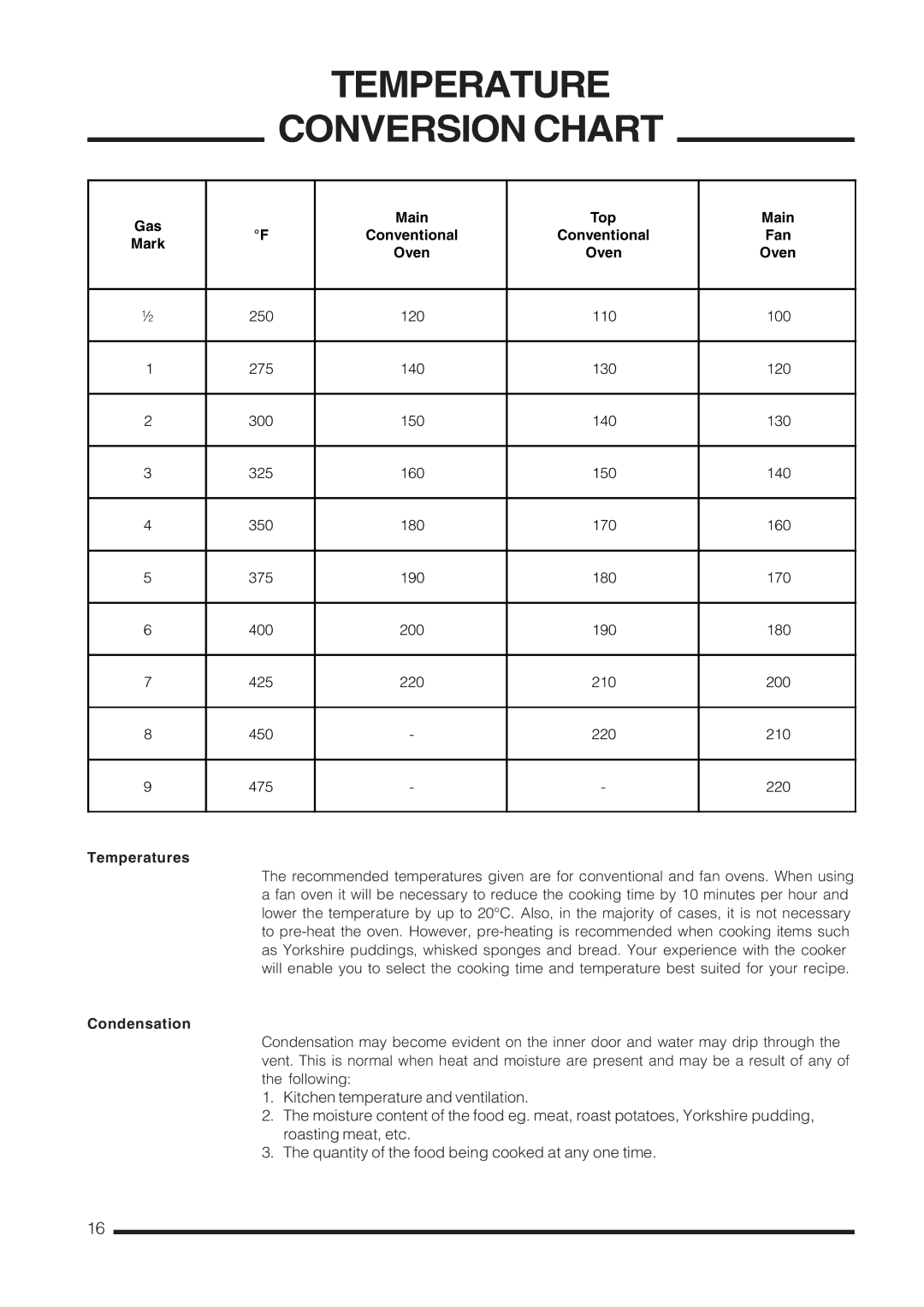
TEMPERATURE
CONVERSION CHART
Gas |
| Main | Top | Main | |
°F | Conventional | Conventional | Fan | ||
Mark | |||||
| Oven | Oven | Oven | ||
|
| ||||
|
|
|
|
| |
½ | 250 | 120 | 110 | 100 | |
|
|
|
|
| |
1 | 275 | 140 | 130 | 120 | |
|
|
|
|
| |
2 | 300 | 150 | 140 | 130 | |
|
|
|
|
| |
3 | 325 | 160 | 150 | 140 | |
|
|
|
|
| |
4 | 350 | 180 | 170 | 160 | |
|
|
|
|
| |
5 | 375 | 190 | 180 | 170 | |
|
|
|
|
| |
6 | 400 | 200 | 190 | 180 | |
|
|
|
|
| |
7 | 425 | 220 | 210 | 200 | |
|
|
|
|
| |
8 | 450 | - | 220 | 210 | |
|
|
|
|
| |
9 | 475 | - | - | 220 | |
|
|
|
|
|
Temperatures
The recommended temperatures given are for conventional and fan ovens. When using a fan oven it will be necessary to reduce the cooking time by 10 minutes per hour and lower the temperature by up to 20°C. Also, in the majority of cases, it is not necessary to
Condensation
Condensation may become evident on the inner door and water may drip through the vent. This is normal when heat and moisture are present and may be a result of any of the following:
1.Kitchen temperature and ventilation.
2.The moisture content of the food eg. meat, roast potatoes, Yorkshire pudding, roasting meat, etc.
3.The quantity of the food being cooked at any one time.
16
